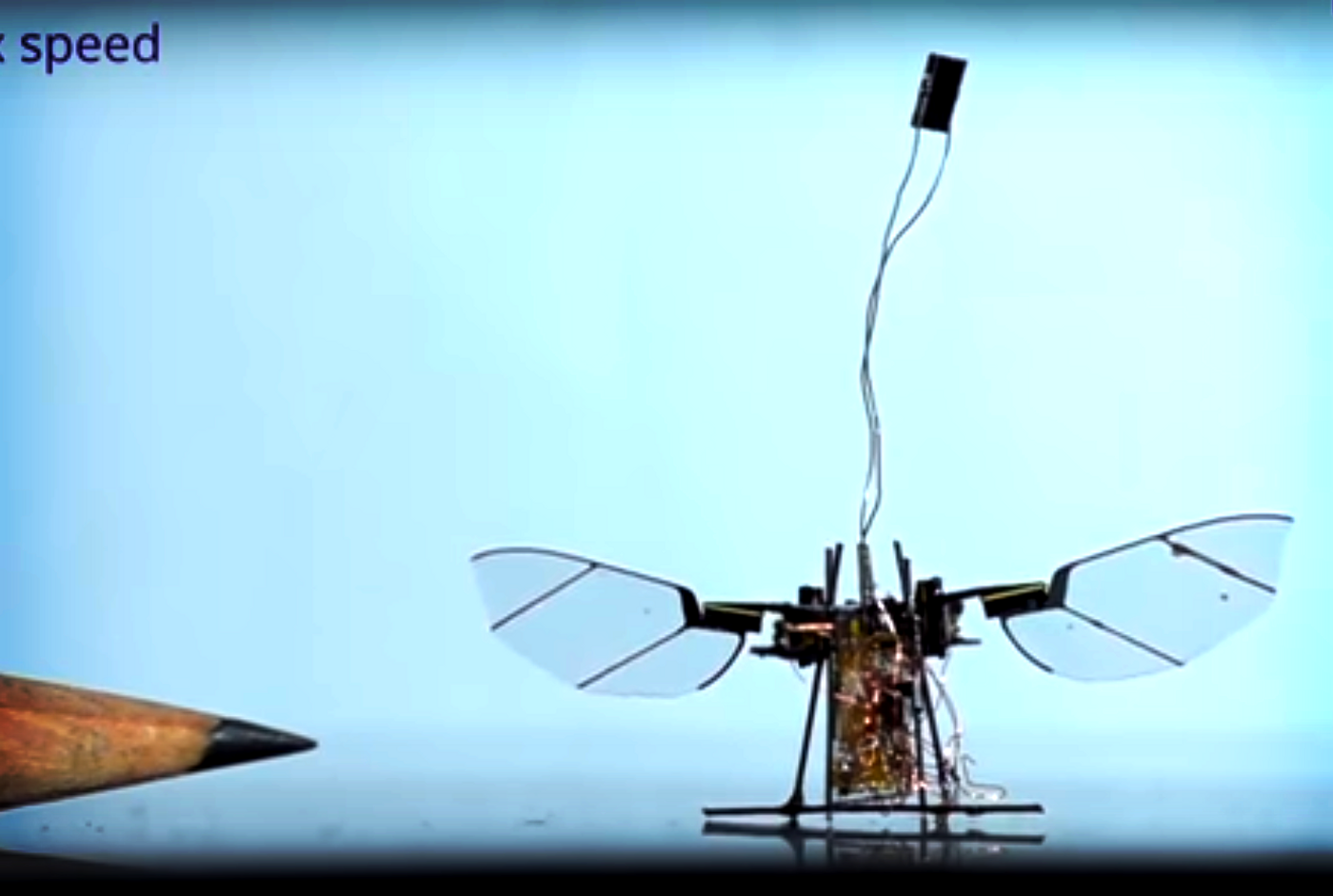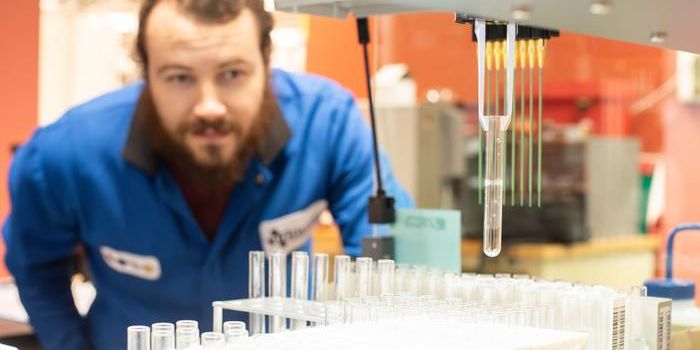Look: First Wireless Robot Bug Takes Flight
May 23, 2018, a team of engineers from The University of Washington presented the first wireless robotic insect at the International Conference on Robotics and Automation in Brisbane, Australia. The mechanical fly, which is just slightly bigger than an organic one and a little heavier than a standard toothpick, is called a RoboFly. While other electronic and robotic bugs have already been invented, this is reportedly the first to “cut the cord” and fly without a wire tether, according to UW News. Co-author and Assistant Professor in the UW Department of Mechanical Engineering Sawyer Fuller said:
Before now, the concept of wireless insect-sized flying robots was science fiction. Would we ever be able to make them work without needing a wire? Our new wireless RoboFly shows they’re much closer to real life.
Instead of receiving energy from a wired power source and controller, RoboFly uses a photovoltaic cell attached above its body, which converts light into electricity. The team shoots a thin and invisible laser beam at the cell to get it to power the little robot. When it moves away from contact with the laser, it automatically powers down and lands itself.
The manmade insects use flapping wings because the spinning propellers that larger drones use would add too much heft. Previously, recreating the vigorous flapping movement that is typically used by living, flying insects required too much power equipment for the robots to carry, so the wired energy sources were used. This engineered fly avoids this leash by carrying a circuit that can boost the seven volts of solar energy it receives up to the 240 required for liftoff and sustained flight.
RoboFly has also been given a brain, of sorts – a microcontroller that sends waves of voltage into the wings to recreate a bug’s fluttering flight.
“The microcontroller acts like a real fly’s brain telling wing muscles when to fire … it tells the wings things like ‘flap hard now’ or ‘don’t flap.'” co-author Vikram Iyer, who is a doctoral student in the UW Department of Electrical Engineering, said.
RoboFly can take off and land at this point, and helping it to master more complex movements like hovering and directed flight are the team’s next goals. As the fly evolves, they hope it can perform helpful tasks in small spaces on its own or spread-out, monotonous ones as a swarm. UW News mentions crop growth surveyance or gas leak detection as possible applications. The latter could potentially have a positive effect on the environment.
Fuller explained:
I’d really like to make one that finds methane leaks … If these robots can make it easy to find leaks, they will be much more likely to be patched up, which will reduce greenhouse emissions. This is inspired by real flies, which are really good at flying around looking for smelly things.
Source:









